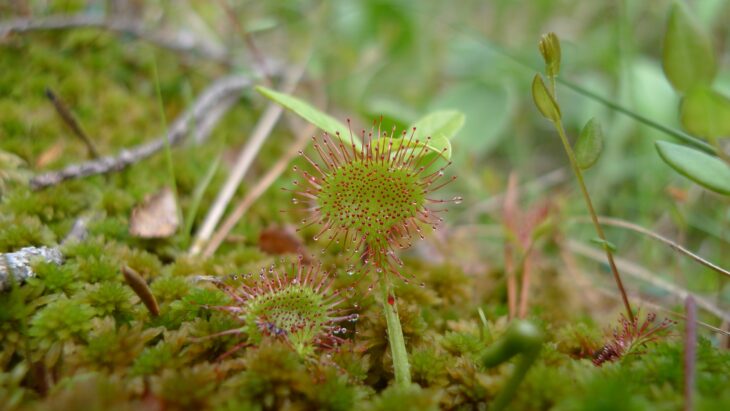Brilliant Bogs!
,

By Sue Walker, Living Landscapes Communications Officer
Bogs have an image problem. Since the time when land started to be valued purely by how much food or money it could provide for people they’ve used phrases like ‘bogging’, ‘on the bog’ and ‘bogged down’ to mean worthless, unpleasant, holding you back. You can’t grow crops, or graze animals safely, or build houses, on a bog.
It’s a shame, because we now know that far from being worthless, peat bogs are brilliant – some of the most valuable habitats we have. They not only support a whole range of amazing plants and animals that can live nowhere else – but they also capture huge amounts of carbon – more than forests, so are a key weapon in our fight against climate change.
And we have a surprising amount around Cumbernauld. In fact there are around 3724 hectares of peat bogs across North Lanarkshire, 10% of Scotland’s coverage. They’re a special kind called ‘lowland raised bog’, which formed over thousands of years as shallow lochs filled in with vegetation that slowly turned into peat.
There are several raised peatbogs in the Cumbernauld area itself, remnant pockets of what used to be a much larger, interconnected wetland landscape. They have become degraded over time, drained for building work, or in the town’s agricultural past, by farmers draining them to grow crops or graze livestock. Then more recently there’s industrial scale peat removal for sale as a growing medium.
North Lanarkshire Council’s Lowland Raised Bog Peatland Action Plan aims to restore and enhance the region’s peat bogs to boost biodiversity and help tackle the climate crisis. Cumbernauld Living Landscape is working with the Council, through its Brilliant Bogs project, to help restore raised peat bogs at some of the town’s key greenspaces. Bogs need to be really wet to survive, so we’ll be clearing encroaching scrub that sucks the water out of them, and damming old drainage ditches to keep the water in. By holding on to water, bogs are also great at flood control!
Unfortunately not all bogs are being restored and protected like this, with many still being torn up for garden peat. This destroys the habitat for the many kinds of wildlife that can only live there, releases more carbon dioxide into the atmosphere, making climate change worse, and increases flood risks in some places. You can do your bit to help save bogs by buying peat-free compost for your garden. If your garden centre doesn’t stock it, ask them why not, and explain why you won’t be buying their peat-based products – only bogs need peat!
Check out our Brilliant Bogs project page to find out more.
